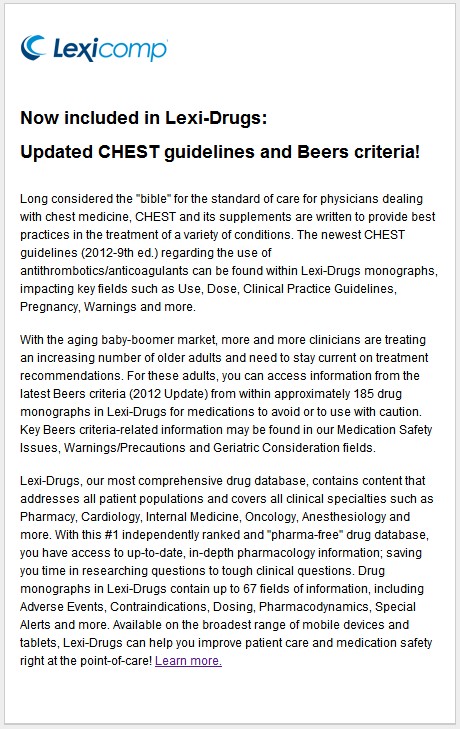 A couple of months ago I received an email from the ASHP Section of Pharmacy Informatics and Technology (SOPIT). It basically said, “hey dude, you’re a pharmacy informatics guy. You should throw your hat in the ring for a position on the SOPIT Executive Committee.†My initial reaction was to ignore it as these things never go well for me. My personality isn’t general suited for committee work. I know this.
A couple of months ago I received an email from the ASHP Section of Pharmacy Informatics and Technology (SOPIT). It basically said, “hey dude, you’re a pharmacy informatics guy. You should throw your hat in the ring for a position on the SOPIT Executive Committee.†My initial reaction was to ignore it as these things never go well for me. My personality isn’t general suited for committee work. I know this.
However, the issue wouldn’t go away. A couple of weeks later it popped up again as a friend and colleague shot me an email asking why I hadn’t completed the on-line biographical nomination form and upload my Curriculum Vitae for a position on the SOPIT Executive Committee. I gave the canned response that I wasn’t interested and that type of thing wasn’t for me. But the seed had been planted. About a week later I logged into the ASHP website and proceeded to jump through all the hoops associated with running for one of the positions on the executive committee. You know, lots of questions about how you would change the world and make it a far better pharmacy friendly place to live.
Anyway, I was informed today via email that not only did I not get nominated for a position on the executive committee; I didn’t even make the cut to be included on the list of possible candidates. Ouch! Here’s the actual wording “The Section of Pharmacy Informatics and Technology’s Committee on Nominations met this month to develop a slate of candidates for the summer 2012 elections. We received many letters and nominations for the two offices of the Section. Unfortunately, we were not able to slate you for this year’s election. “ Doh!
I won’t lie, my ego took a hit. Even though I’m generally not well suited to sit on committees I thought this would be cool. Should have gone with my gut and ignored the email. Humility is a good thing, but sometimes being humbled stings a bit. Better to think you turned them down than the other way around.
I’ll eventually get over it. People are resilient that way. In the meantime I’m forming my own committee of which I will be the Executive Vice President; I’m not President material. Haven’t decided what the committee will do, but it must involve Diet Pepsi, popcorn and movies. If you’re interested in being on the committee let me know. Space is limited.
The Prescriber’s Essentials Android App is a combination of the award-winning Tarascon Pharmacopoeia and the Johns Hopkins POC-IT Center ABX Guide, now available for your Android device.

